Feb
18
2014
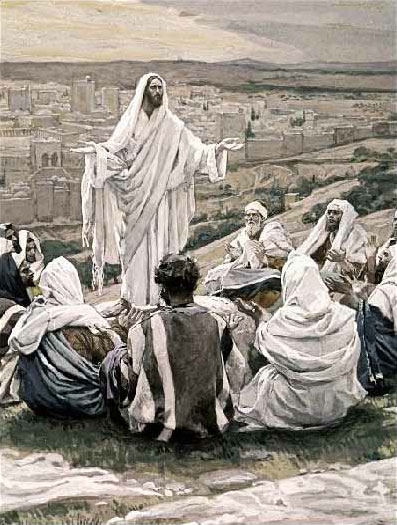
This post is from Chris Wooldridge’s blog. His take on the structure of the Lord’s prayer is a little different to mine (I have the evil one at the center) but I find it very attractive and interesting. He writes:
Continue reading
7 comments | tags: Chris Wooldridge, Literary Structure, Matthew, Ten Commandments | posted in Biblical Theology
Feb
12
2014

“As always, the beauty of the arrangement is breathtaking. It is historical narrative, poetry, legal Covenant and high symbolism all at once… It consists of three Cycles which recapitulate the triune ‘Garden, Land, World’ architecture of the Creation and the Tabernacle.”
Matthew 28: SUCCESSION
The fifth major cycle takes us to the end of the Covenant pattern, from the Covenant Sanctions to Covenant Succession. In the Old Testament, this concerned handing Covenant authority to the faithful of the next generation. It was the blessings of Jacob upon his sons (Garden), and Moses passing the baton of headship of Israel to Joshua (Land). This time, the inheritance was not the Garden Sanctuary of Moses [1] nor the Land of Canaan, but the entire World. Thus, it is no accident that in both cases, in that of Joshua and that of the disciples, He said, “I am with you.” A battle lay ahead.
Continue reading
Comments Off | tags: Baptism, Evangelism, Literary Structure, Matthew, Resurrection, Revelation | posted in Bible Matrix, Biblical Theology, The Last Days
Feb
3
2014
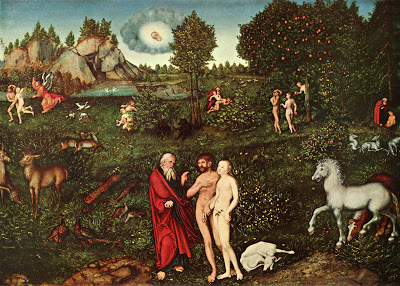
Paul understood God’s ways. God’s ways are “Covenant-shaped,” they concern transformation, and the glory always comes at the end. It is the result of God’s Word going out and coming back with something good, His own goodness multiplied.
Continue reading
4 comments | tags: Circumcision, Covenant Theology, Genesis, Literary Structure, Paul, Romans | posted in Bible Matrix, Biblical Theology
Jan
31
2014
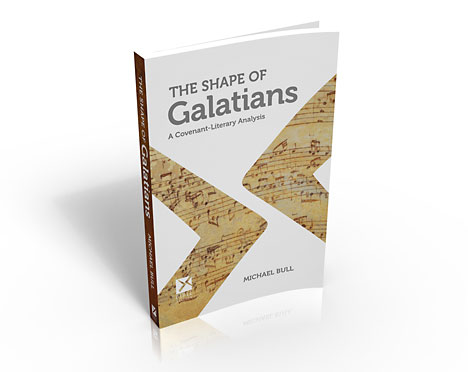
The book is currently with the editor for a polish and will be available soon. Here’s a unique review from Steven Opp, who is actually quoted in the book, but don’t let his bias deter you. I still reckon the literary “riffs” are the Apostle Paul’s, not mine, so imagine it’s Paul up there on stage with a “drumitar” and a heart full of jazz.
Several years ago I went with my brother Ryan to see Béla Fleck and the Flecktones in concert. They are an instrumental fusion band consisting of a banjo, sax, bass, and “drumitar” (if you donʼt know what a drumitar is, go on youtube and find out!) As we waited for the curtains to open, I asked Ryan if he knew what songs theyʼd be playing. He said they would do some of their hits but that it would probably morph into a jam session. But not just any jam session. We would witness some of the worldʼs best jazz and bluegrass artists come together and just have some fun. “The truth is,” he said,“weʼre basically going to watch four really talented guys get on stage and play with their toys for a couple hours.” As the night unfolded, I realized he was right. And it was a great concert!
Continue reading
Comments Off | tags: Galatians, Literary Structure, Steven Opp, The Shape of Galatians | posted in Bible Matrix, Biblical Theology
Dec
16
2013
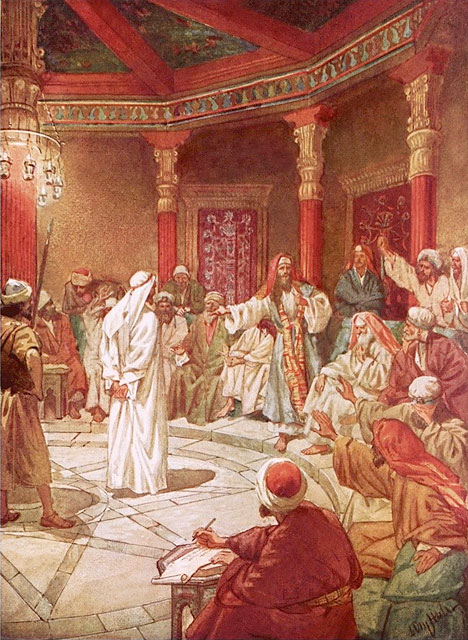
“Sanctions corresponds to the Day of Atonement. One goat goes to heaven (as fragrant smoke) and the other goes to hell, carrying the sins of the people into the wilderness, to be eaten by the birds and beasts. The difference here is that we have not two goats, but two High Priests…”
Matthew 26-27: SANCTIONS
The fourth major cycle moves us from the Covenant Ethics to the Covenant Sanctions. This concerns the pouring out of blessings and curses for obedience or disobedience to the Covenant, and the cleansing of the Land from the guilt of sin and the ensuing barrenness.
Aligning this pattern with its corrupted prototype in Eden, the “war of words” between Adam (Jesus) and the serpent (the Jewish rulers) is over, and it is time for some face to face combat, and a reckoning.
Continue reading
Comments Off | tags: Feasts, Fractals, High Priest, Literary Structure, Matthew, Peter | posted in Bible Matrix, Biblical Theology
Dec
9
2013
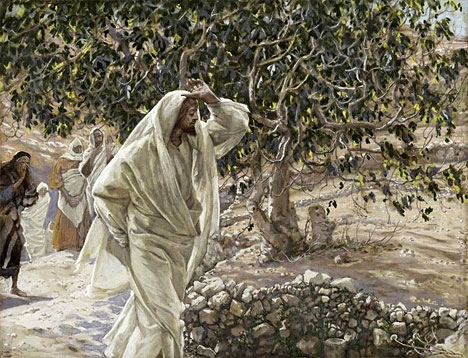
“A stone would be rejected by builders because it was ‘unhewn,’ like an Altar stone. But priestly submission was the only possible foundation for the perfectly chiseled stones of Israel’s temples, including the one still taking shape as Jesus spoke these words.”
Matthew 16-25: ETHICS
The third cycle moves us from the “Exodus” of Jesus and His ministry to the threshing of Israel under His new Law. His growing influence among the people (Hierarchy) brings Him into conflict with the authorities (Ethics).
Continue reading
1 comment | tags: Covenant curse, Covenant Theology, Literary Structure, Matthew | posted in Bible Matrix, Biblical Theology, The Last Days
Dec
3
2013
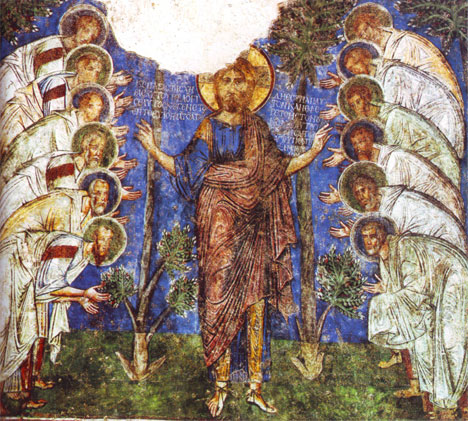
“John was not a court prophet but a man in skins, like Adam, representing both the goodness (covering) and severity (death) of God. John’s food and shelter, like his ministry, came directly from God, and was not the result of the wisdom of men.”
Matthew 10-15: HIERARCHY
The theme of the second major cycle of Matthew is the Hierarchy phase of the Covenant, which concerns the delegation of authority. This section contains seven cycles, a complete “week.” Identification of the structure answers some interesting questions concerning Jesus’ directives.
Continue reading
Comments Off | tags: Covenant Theology, Herod, Herodias, John the Baptist, Literary Structure, Matthew | posted in Bible Matrix, Biblical Theology, The Last Days
Nov
28
2013

I guess this series should be called “A Structure of Matthew,” since there are so many interesting resources available. But of course, as usual, I reckon everyone else is wrong because the Bible Matrix is “the killer hermeneutic.” Ha! See what you think.
Continue reading
Comments Off | tags: Covenant Theology, Literary Structure, Matthew | posted in Bible Matrix, Biblical Theology, The Last Days
Nov
16
2013
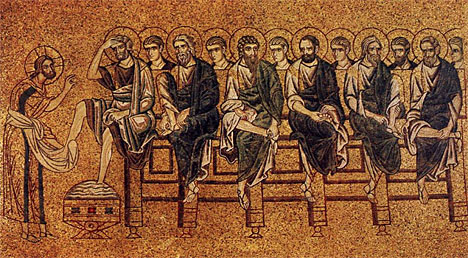
How to Fulfill the Law
“…men are enthroned as elohim (judicial ‘gods’) but not as God intended. Those who sit in the seat of Moses often lack his meekness before God, and their rule is like that of Lamech. Their seventy times seven ‘fulfilling of the Law’ is vengeance not forgiveness.”
We continue with the Deuteronomy section of Galatians, which has seven cycles. Paul moves from an Ascension/Firstfruits motif to an Testing/Pentecost motif. Being the center of this final group of cycles, and at the center of its Ethics cycles, here we have its turning point. The first half of this cycle is about sacrificial binding. The last half is about being loosed on account of the sacrifice.
Continue reading
Comments Off | tags: Galatians, Literary Structure, Paul | posted in Bible Matrix, Biblical Theology, Christian Life, Ethics
Nov
5
2013
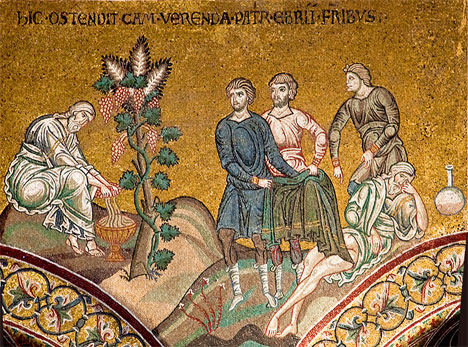
or Semina Divina
And Jesus, perceiving in himself that power had gone out from him, immediately turned about in the crowd and said, “Who touched my garments?” (Mark 5:30)
We aren’t told in Genesis 9 what Ham’s intention was when he “uncovered” his father, Noah. Peter Leithart and James Jordan both present some fascinating insights (which differ from each other), but perhaps there is a solution elsewhere in Genesis, which, combined with both these possibilities, offers something new.
This post has been slain and resurrected for inclusion in Praxeme: Journal of Systematic Typology.
Continue reading
Comments Off | tags: Abraham, Ark of the Covenant, Covenant curse, Covenant Theology, Genesis, James Jordan, Literary Structure, Moses, Noah, Peter Leithart | posted in Bible Matrix, Biblical Theology



































